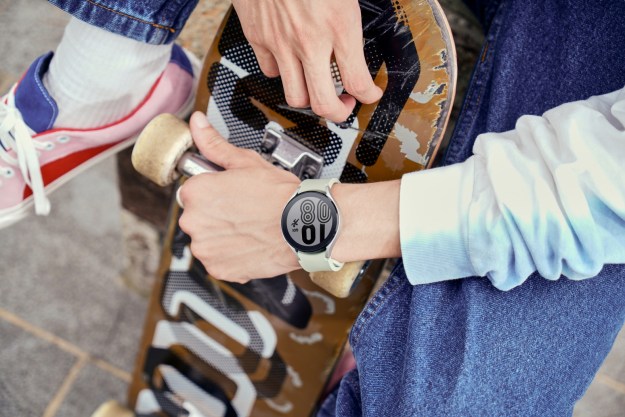The latest and greatest smartwatches are the Apple Watch, Samsung’s Gear S2, and the many Android Wear watches out there, but as much as they offer the best in smartwatch tech consumers can buy, the great thing about wearables is that something new and exciting is always on the horizon. Designers and engineers at Carnegie Mellon University in Pittsburgh have created a new prototype in smartwatch design that seeks to remedy challenges in usability.
The unnamed prototype was featured in a 2014 presentation from the Future Interfaces Group, a group of PhD candidates at CMU led by Chris Harrison. The smartwatch, layered in sensors and circuit boards, can respond to more types of interaction than your average wearable with a touchscreen and accelerometer. The prototype detects and responds to specific gestures. Every time the user twists, turns, clicks, or pans the device, it reacts.
What’s fascinating is that the video does more than simply prove that the device responds to tilts and twists. It demonstrates how these experimental features might be applicable to everyday scenarios. The video shows just how easy it is to zoom in on a map, pan through calendar events, and even play Doom, all without touching the screen.
This isn’t to say such a future wearable would lack a touchscreen, but rather that a future wearable powered by this technology could offer a far more user-friendly experience. After all, it is difficult for those with big fingers to manipulate tiny apps on such a small touchscreen surface.
The FIG has also worked on other prototypes involving user-friendly designs and mobile hardware. Some of the projects involve fingerprint reading with a normal smartphone touchscreen, as well as detecting objects through electromagnetic signals. There’s certainly some interesting stuff going on at CMU that will make its way to our smartphones and wearables in the years to come. Here’s to hoping that day comes sooner rather than later.



